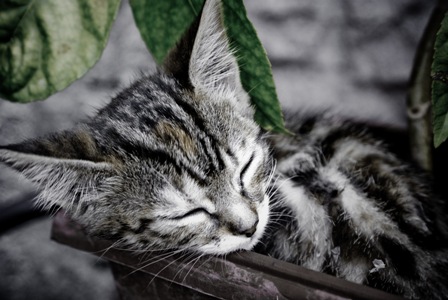Cats’ Sleeping Patterns
Cats’ Sleeping Patterns
The enormous amount of sleeping cats’ images spread on the internet, making us laughing, and most often the one question has emerged – how they manage to sleep in all of these funny positions and on pretty uncomfortable places? How our lovely pets can sleep wherever they find themselves? As cat owners, we all know how it feels when our lovely cat comes back to nap while we have to go to work, especially on a rainy day. Or, after a hard working day, when we are tired and asleep, our cats become playful and full of energy. How many times we have noticed our cat napping somewhere in the yard, completely relaxed, while everything around her pulsing with life. Maybe the answer is hiding somewhere in their natural sleeping patterns. The article “Why Do Cats Sleep So Much?” describes these different types of cats’ sleeping patterns.
Cats’ Sleeping Patterns
THE ‘CATNAP’
The first thing you should realize is that cats are most active between dusk and dawn, which means that they sleep mostly during the day and become active around twilight. This can come as quite a shock if you’re bringing a new kitty home for the first time. Your cat will waste no time investigating and getting into trouble — usually while you’re fast asleep! But as soon your cat is done with breakfast, as the rest of the world winds up for action, you’ll find him winding down for a long day of slumber.
ENERGY CONSERVATION
Cats have the physiology of a predator, meaning that they’re hardwired to give chase and hunt — mainly at night. Large cats such as lions have a similar pattern of sleeping during the day and hunting at night. Although they have been domesticated for the most part, housecats still retain that wild streak. Even cats at play will display the feline primal instincts of creeping about in the shadows and, without a whisper of warning, pouncing on their target prey.
And hunting prey takes an amazing amount of energy. Whether your kitty is hunting for outdoor prey or tackling a catnip toy, all that sleep he gets is reserve energy for running, pouncing, climbing and stalking.
ONE EYE OPEN
Like people, cats either doze in a light sleep or sleep very deeply. When your cat dozes (which lasts about fifteen minutes to a half hour), he will position his body so that he can spring up and into action at a moment’s notice.
During deep sleep, cats experience rapid (or quick) brain movement. Deep sleep tends to last about five minutes, after which the cat goes back to dozing. This dozing-deep sleep pattern goes on until the cat wakes up.
Kittens and older cats tend to sleep more than the average-aged adult cat.
RAINY DAY
It should come as no surprise that felines are affected by the weather, just like us. Cat behavior can vary greatly, depending on their breed, age, temperament and overall health. But, whatever your kitty’s usual disposition, it has been observed that cats sleep more when the weather calls for it. Yes, even if your kitty is an exclusive indoor-dweller, a rainy or cold day will have him (and probably you) yawning and looking for some shut-eye.
Why is it important to understand properly the cat’s sleeping habits? As we all know, the cats are creatures of habit, and any change that seems unusual is worth noticing. Sometimes, the changes in habitual sleeping patterns can indicate the thyroid problem in cat. Furthermore, every extreme in its duration, whether too much or too less sleep, can imply some other problem, such as kidney problems or cancer. Thus, if we are well known with the regular sleeping cycles of our cats, we can easily identify when something is wrong and help our lovely pet to stay healthy and happy.










